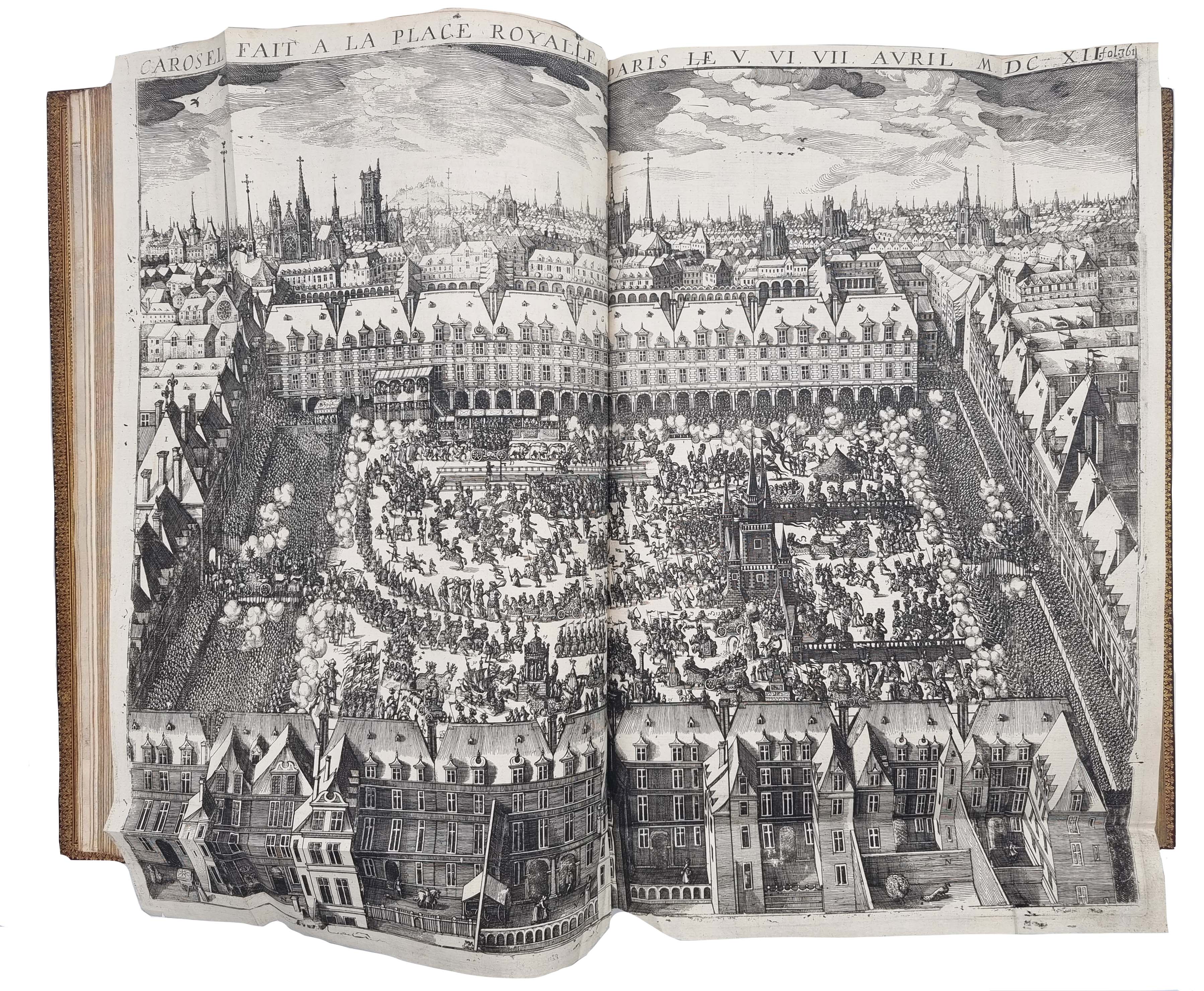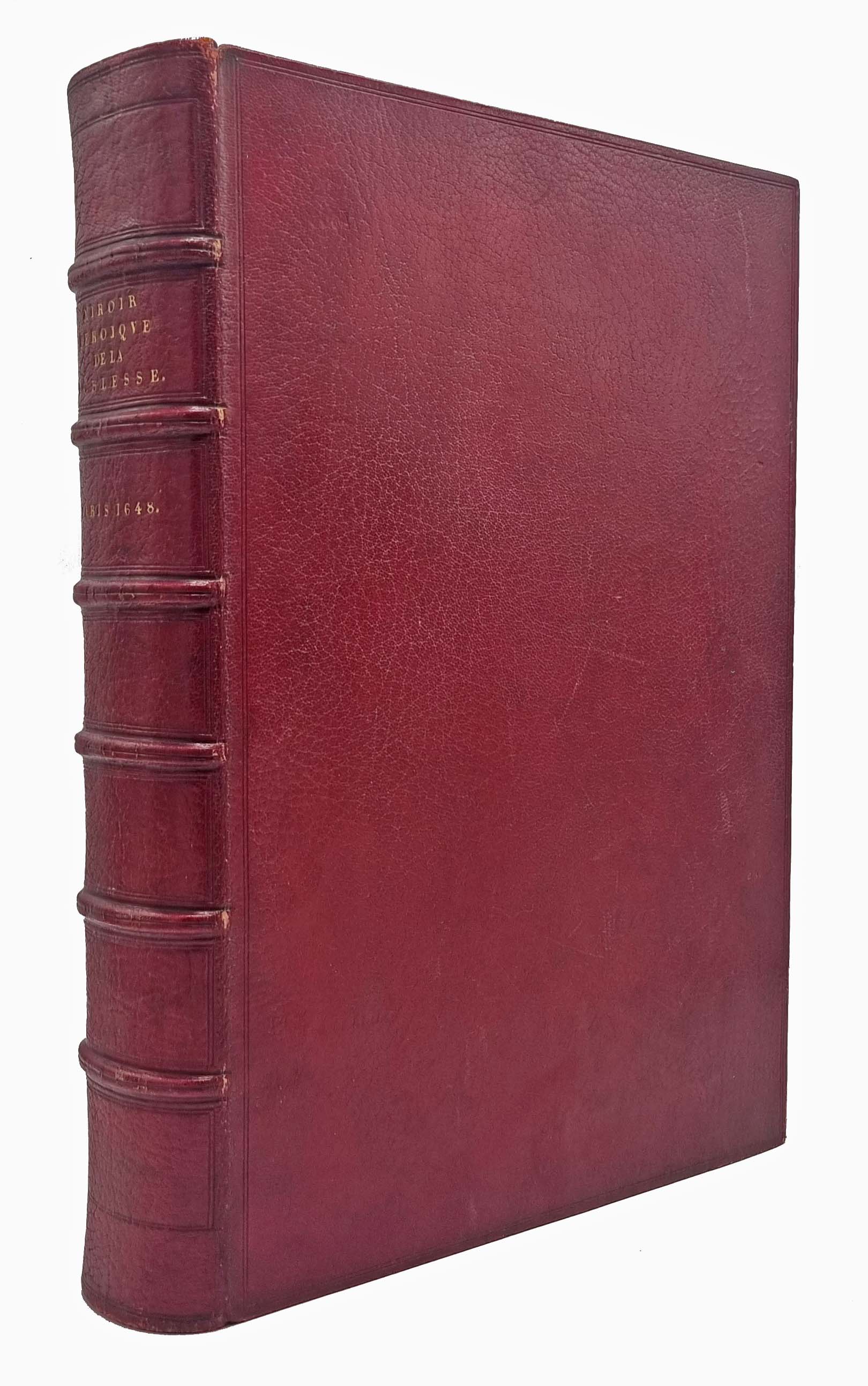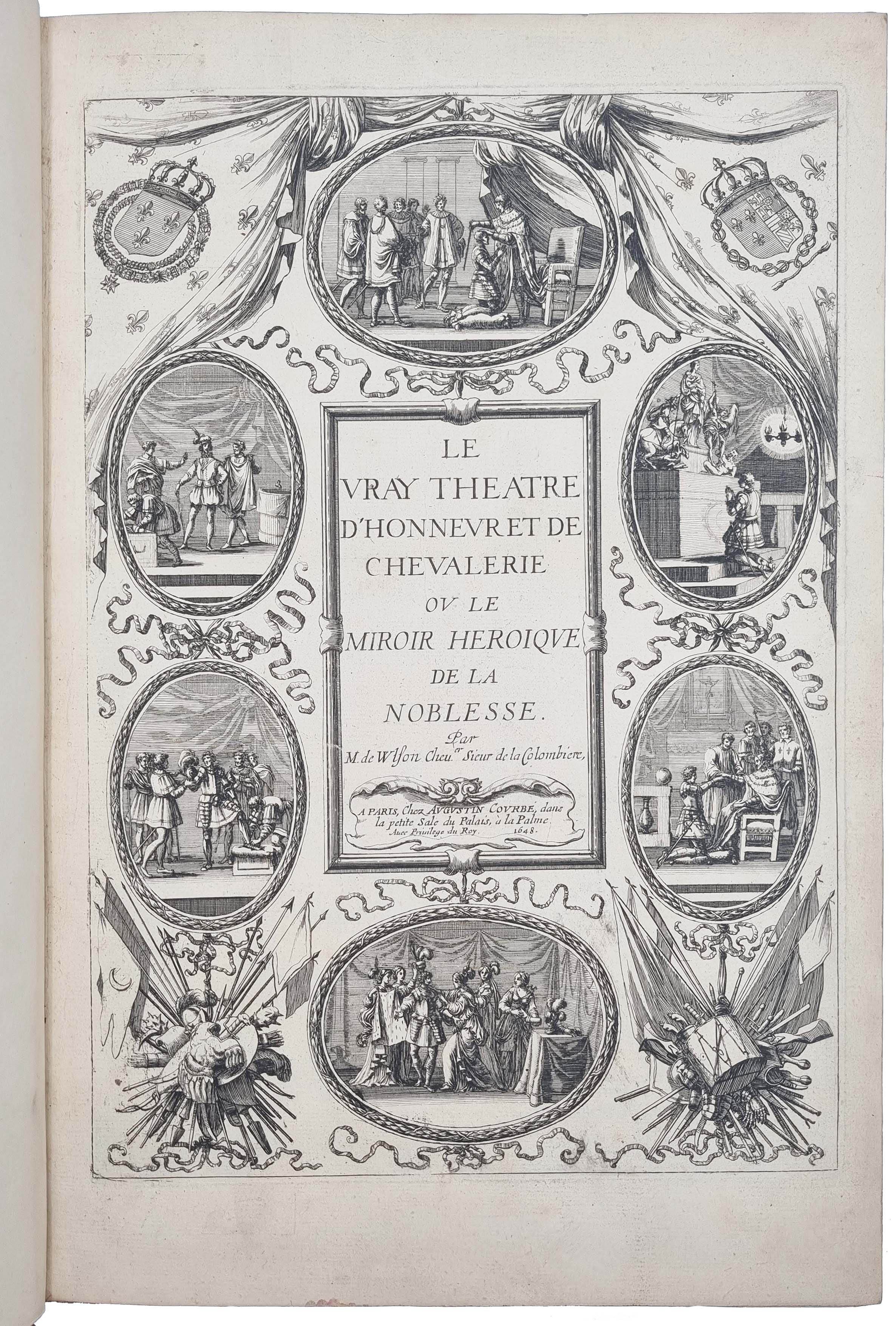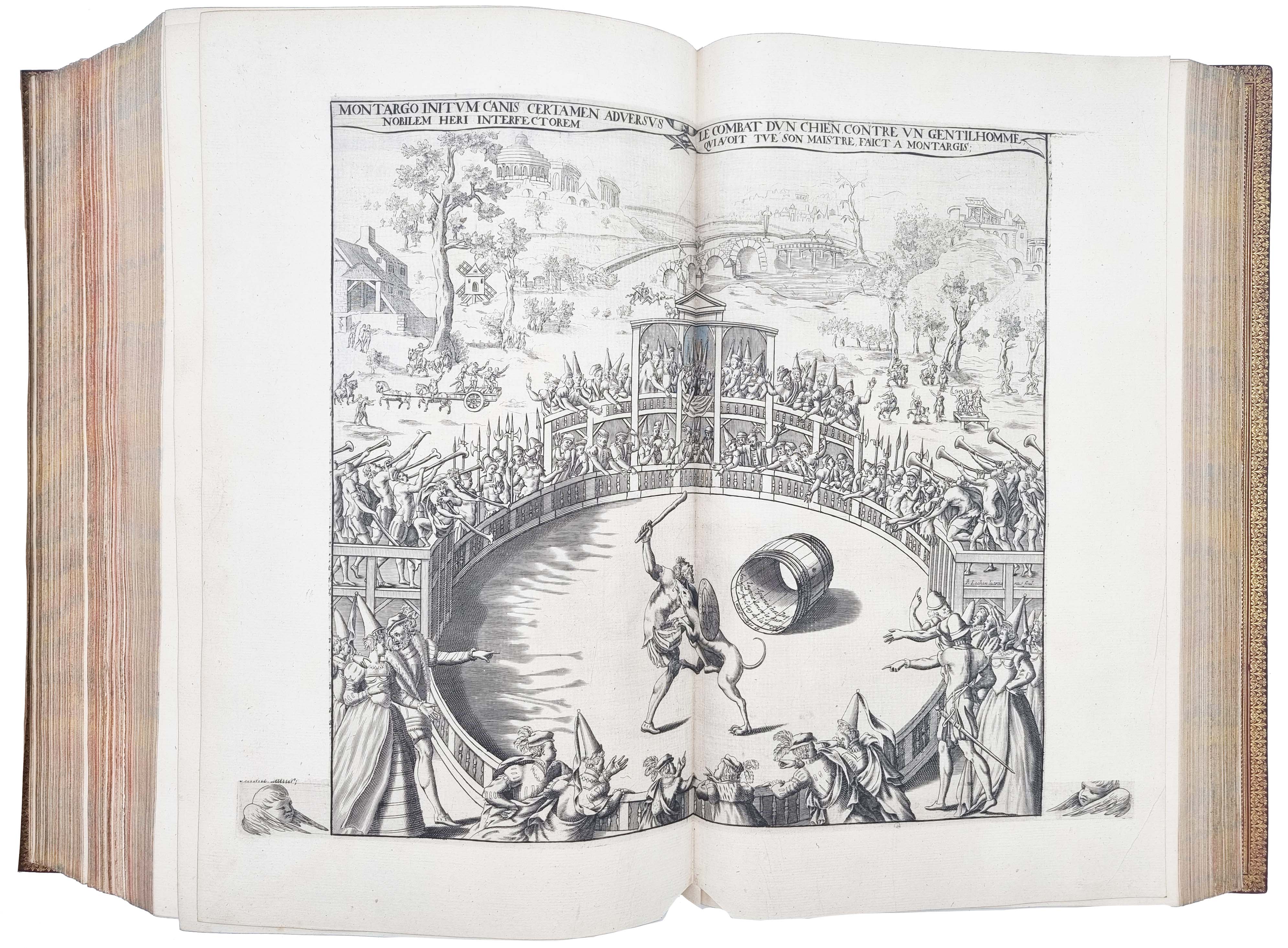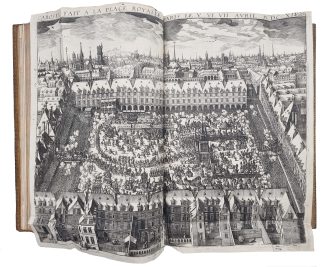VULSON, Marc de.
MONUMENTAL ILLUSTRATED CHIVALRY
Le vray theatre d’honneur et de cheualerie.
Paris, Augustin Courbé, 1648£9,500.00
FIRST EDITION. LARGE PAPER COPY. Large folio. 2 works in 1. I: pp. [26], 593, [13] + 4 ll. of plates; II: pp. [34], 640 + 2 ll. of plates, duplicate royal privilege in vol.2 (i6) excised, a total of 6 double-page engraved plates of chivalric festivals and jousts within decorated border, decorated initials and ornaments. I: general engraved title, allegorical engraved frontispiece with Cardinal Mazarin’s arms, his full-page engraved portrait to ã2 verso, clean tear towards fore-edge of 2E2 and small hole at blank foot of 2F2 repaired; II: full-page engraved author’s portrait to frontispiece and **4 verso, engraved title, 4 engraved head- or tailpieces, long clean tear to second e1 repaired without loss (touching a dozen letters). Fine copies in crushed crimson morocco by Niedre, marbled eps, double blind ruled, raised bands, spine gilt-lettered, inner edges gilt, a.e.g., c1900 armorial bookplate of G. Chartener to ffep.
A fine, large paper copy of the first edition, complete with both parts, of the first illustrated encyclopaedia of chivalry, jousts and combat – ‘ouvrage très-curieux et fort recherchée’ (Brunet). Dedicated to Cardinal Mazarin, it is the masterpiece of the famous herald Marcus Vulson de La Colombière (d.1658). To him is attributed the invention of the hatching system of tinctures, as well as the rediscovery and adaptation of the image of chivalry, which would greatly influence C19 medievalism. ‘Vray theatre’ sought to make French aristocrats ‘familiar with the virtues of their ancestors’, and to show them, ‘as if on a mirror’, how chivalric tournaments can teach ‘the art of living well’, by banning laxity and laziness and encouraging the imitation of the illustrious deeds of the past. The 6 double-page engravings, cut by François Chauveau, illustrate lavish medieval and Renaissance festivals, including a tremendous folding scene, with a bird’s-eye view of Place Royale, a tournament organized for Louis XIII in Paris in 1612, and a man fighting a dog, cheered by the crowd, in Montargis under Charles V. Part I embraces chivalry from its classical origins to Renaissance France. The sections on antiquity and the early middle ages describe triumphal processions (with sundry types of crowns), chivalric orders and rituals, the meaning of shields and their code of honour, the history of tournaments and jousts, their structure and rules, and the accounts of a variety of famous festivals and events (e.g., ‘emprise de la guele du dragon’), with the names of the participants. A long section is devoted to Knights Errant and the Round Table, their names and heraldry, and several major tournaments held at the Arthurian court. Several accounts of recent historical festivals are also present, with a detailed chronicle of each day and even some lines (in French or Italian) recited by allegorical characters on pageants, e.g., one for Louis XII held in Milan in 1507, one for his wife in Paris in 1514, and one for Henry II in Paris in 1549. Vulson even includes proforma documents, e.g., a letter to be sent by knights or shield-bearers who cannot be present at the assembly of their order. Part II begins with a long section on tournaments ‘to the death’ (‘à outrance’), with accounts on their structure and rituals, and observations on their value and use ‘for justice and reason’. The remainder is devoted to ‘curious’ or memorable tournaments, for the strength of the participants or the winner’s virtue, from the late middle ages to the C17. A fine copy of this ground-breaking, sumptuous work.
I-II: Harvard, SUNY, Illinois, BYU and KU copies recorded in the US. I: USTC 6005905; Brunet V, 1389; Graesse VI, 404; Lipperheide Tb 11. II: USTC 6005906; Brunet V, 1389; Graesse VI, 404; Lipperheide Tb 11.In stock


